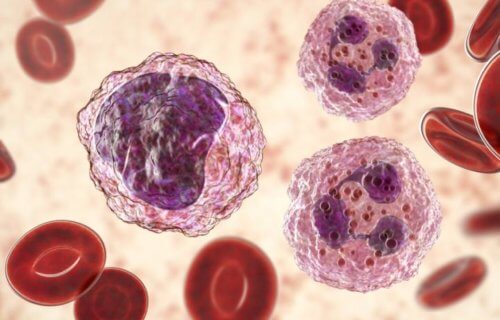MARTINSRIED, Germany — Leukemia is a cancer of the blood which prevents the body from fighting infections. The disease’s stem cells usually hide in a patient’s bone marrow, but a study finds a new treatment can dislodge these cells from their protective tumors. Researchers in Germany say a therapy targeting a specific protein in the blood may provide new hope of treating leukemia.
A team from the Max Planck Institute of Biochemistry in Martinsried finds removing Kindlin-3 from blood cells in mice causes them to not develop leukemia. Without a proper home in the marrow to protect them, leukemic stem cells float through the blood until they die.
Researchers explain that blood cells have a limited lifespan in any organism. People lose blood cells through bleeding or from infections all the time and the body is constantly replacing them. Hematopoietic stem cells in the bone marrow are in charge of developing both red and white blood cells.
In patients with chronic myeloid leukemia, these stem cells mutate and gene building blocks which normally stay separate fuse together. The improperly constructed chromosomes, or Philadelphia chromosomes, provide the genetic information to create BCR-ABL oncogenes. This whole process, researchers say, results in leukemic stem cells behaving selfishly within the body and hindering blood stem cells.
No protein? No cancer
The study finds leukemic stem cells need a protective niche, like a tumor, to survive. These cells use so-called “integrins” to attach themselves to proteins on the outside of cells. The integrins specifically seek out a protein called Kindlin.
“The isoform Kindlin-3 is only used by blood cells. If mice harbor leukemic stem cells that lack Kindlin-3, they do not develop leukemia,” first author Peter Krenn explains in a media release. “Without Kindlin-3 and active integrins, the leukemic stem cells cannot attach themselves to their niche environment and are released from the bone marrow into the blood. Since they cannot home elsewhere either, they remain in the blood. There the leukemic stem cells lack the urgently needed support, which they usually receive from the niche, and die.”
How does the new leukemia treatment work?
Study authors say leukemic stem cells have their own protein on the surface of their cells called CTLA-4. These proteins don’t appear in healthy blood stem cells, allowing the team to spot the cancerous bodies. Scientists made use of CTLA-4 receptors to ferry a compound that destroys Kindlin-3 into leukemic stem cells.
“CTLA-4 is only briefly present on the cell surface and is then rapidly recycled back into the cell and then back to the cell surface again. This enabled us to introduce a Kindlin-3 degrading siRNA into the cell by coupling it to a CTLA-4-binding RNA sequence, which is called aptamer. The leukemic stem cell without Kindlin-3 is flushed from the bone marrow and the leukemia loses its origin and runs out of fuel,” the researcher in the institute’s Department of Molecular Medicine adds.
Researchers say the new approach provides a successful way to treat chronic myeloid leukemia in mice, but the results should also unlock a treatment for humans as well.
“The inhibited Kindlin-3 production and consequent loss of integrin function prevents the cancer cells from being able to adhere and settle in tumor-promoting niches. I assume that this method will also prevent the cancer cells of other types of leukemia from settling and that these diseases could thus become much more treatable,” Krenn concludes.
The study appears in the journal Proceedings of the National Academy of Sciences.
